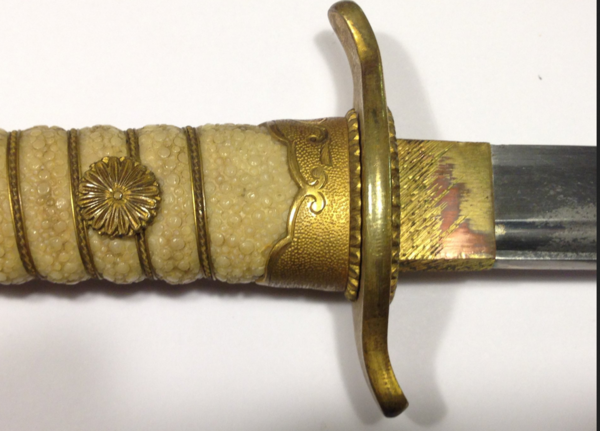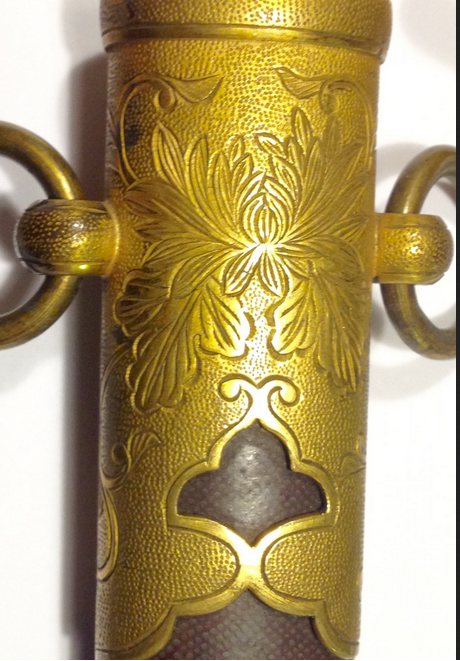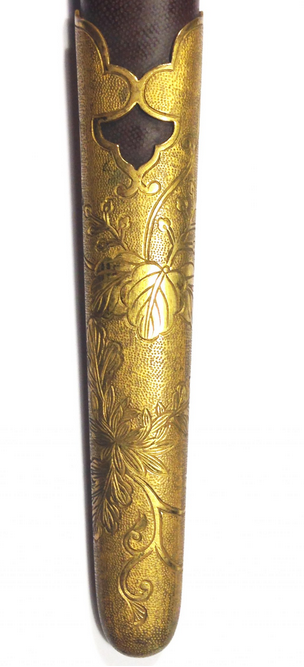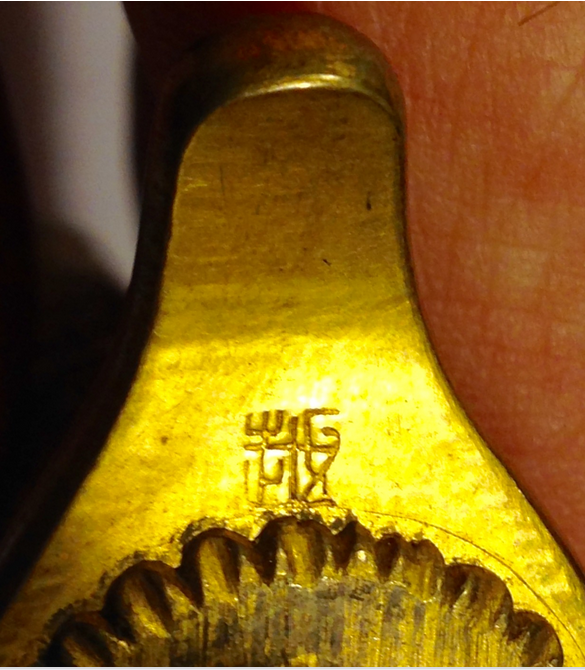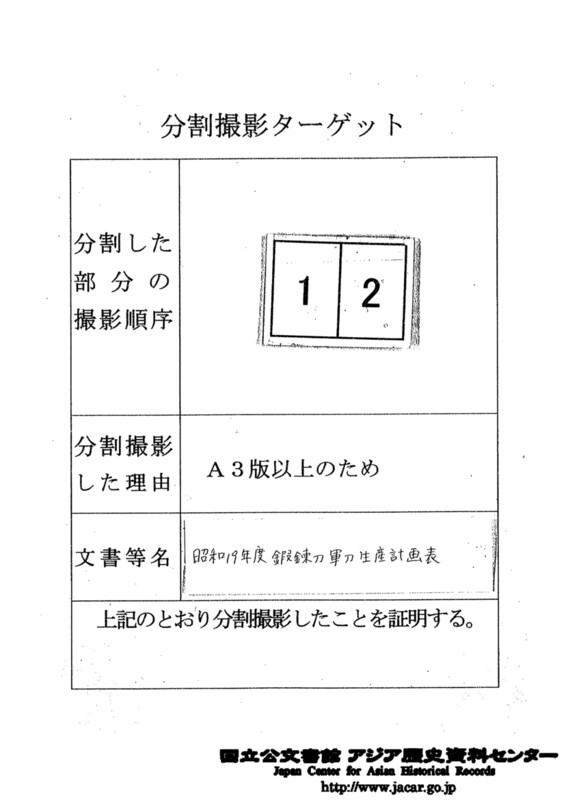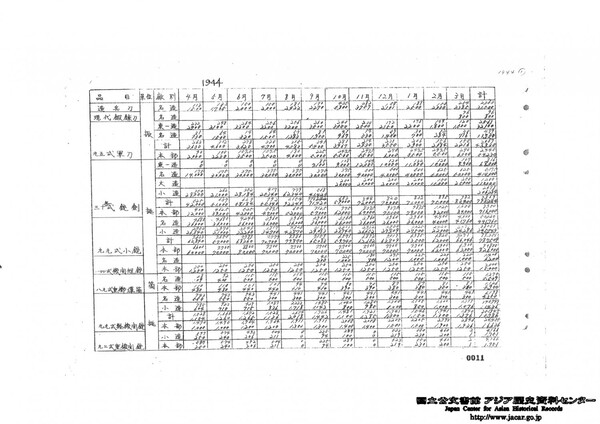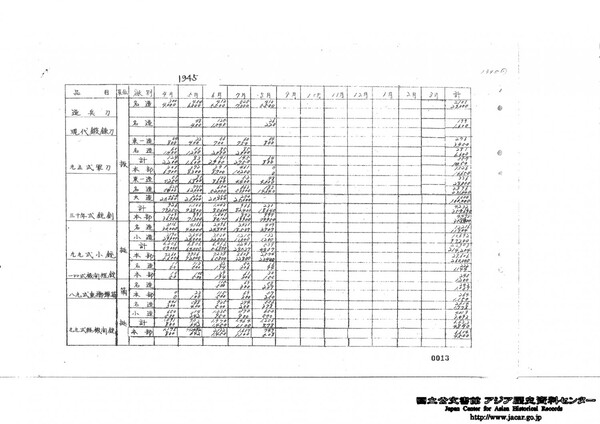-
Posts
12,958 -
Joined
-
Last visited
-
Days Won
154
Everything posted by Bruce Pennington
-
I'm helping to ID a dirk someone has. Looks like a pretty high official of the Imperial Household, but I can't read Japanese (yet!). Can someone tell me what the kanji means?
-

Matching Mystery Marine Mounton Ebay
Bruce Pennington replied to Johncstroud's topic in Military Swords of Japan
Brian, OMG, thanks for the tip! I've been on this forum for over a year, and never knew about that forum! Dang, there's LOTs of sword stuff going on over there! -

Matching Mystery Marine Mounton Ebay
Bruce Pennington replied to Johncstroud's topic in Military Swords of Japan
John, I don't see the difference? Yours looks like it was polished over, which fuzzed out the detail. What is it that looks different to you? -

Matching Mystery Marine Mounton Ebay
Bruce Pennington replied to Johncstroud's topic in Military Swords of Japan
John, seems translators are occupied elsewhere for the moment. Have you ever tried the Wehrmacht site? They seem to have more active translators right now. http://www.wehrmacht-awards.com/forums/forumdisplay.php?f=59 -
I always bring my gunto here. The forum for military blades on this site is dominated by European weapons. This site is where the Japanese enthusiasts hang out. However, I also lurk on the Werhmacht site, Axis allies, Japan: http://www.wehrmacht-awards.com/forums/forumdisplay.php?f=59. There the enthusiasts are all about WWII
-

Matching Mystery Marine Mounton Ebay
Bruce Pennington replied to Johncstroud's topic in Military Swords of Japan
While the standard Navy kai-gunto had 2 ashi, this version was quite common, and WAS Navy. I'm on the road and don't have my books, but there are multiple sources that verify this version as Navy. They were believed to have been used by Naval officers stationed on land, working with the Army. The standard statement is that they believed the army fittings would stand up better in land combat. But the fittings were gold-guilded and fitted on navy saya and tsuka. The blades are always kai-gunto blades. -

Matching Mystery Marine Mounton Ebay
Bruce Pennington replied to Johncstroud's topic in Military Swords of Japan
Can't speak to the mei, but the aresenal stamp is Toyokawa Naval Arsenal. -

Help Identifying A Tanto
Bruce Pennington replied to StringHunter's topic in Military Swords of Japan
Grey, I see what you mean! I am but a young grass-hoppahhhh, with much to learn still! Interesting artifact, if in fact it was originally a gunto from the war. If cheap, it's still a piece of history, namely the history right after the war when gunto were cut in half. Merchants took the pointy ends and crafted souveniers out of them. It still tells a story, if that's what one is looking for. Otherwise, keep looking! -

Help Identifying A Tanto
Bruce Pennington replied to StringHunter's topic in Military Swords of Japan
Very well made! I can't speak to the age though. -
Wouter, sorry, no. I had just been studying the naval dirks, loaded with them when I saw your post. I'ts more likely a star.
-

Late War / Last Ditch Nco Opinions.
Bruce Pennington replied to hockeydad2012's topic in Military Swords of Japan
Josh, I don't see serial numbers n those pics. Are there any? It's not common, but not unheard of either. -

Nco Type 95 Shin Gunto
Bruce Pennington replied to CarlosFandango's topic in Military Swords of Japan
Simon, It's the first book Fuller & Gregory put out. You'll find it cheaper than their updated 1996 version, "Japanese Military and Civil Swords and Dirks", which is thicker and has more information. However, the earlier edition still has a few pics, like the one above, that I don't see in the updated edition. Also, a good book to have is Dawson's "Swords of Imperial Japan 1868-1945 Cyclopedia Edition. Finally, FOR FREE is Ohmura's vast, and beautiful, study of WWII gunto - http://ohmura-study.net/900.html -

Vet Estate Find. Assistance Please
Bruce Pennington replied to gtodan's topic in Military Swords of Japan
Fuller called this "'whiteline' and 'Belfast'". Says it was done by US seamen and "should be regarded as part of the sword's history and should not be removed in favour of the standard..." fittings. -
Here's a pic of the end of one like yours in Fuller & Gregory. It doesn't show the stitched on semegane (scabbard band), but it may have been there.
-

Nco Type 95 Shin Gunto
Bruce Pennington replied to CarlosFandango's topic in Military Swords of Japan
Simon, Here's a pic of an NCO Type 95 with full-length leather covers (from the 1987 Fuller and Gregory, Military Swords of Japan 1868-1945 (not a great pic, and it wasn't that clear in the book either, but the paragraph right by it describes it): -

Vet Estate Find. Assistance Please
Bruce Pennington replied to gtodan's topic in Military Swords of Japan
gtodan, first we could use a name so we can actually chat with you! First, Joe is right, you need to push out the little bamboo peg that goes through the handle. That will let you slide the handle off the tang. Many war swords had swordsmith signatures on the tang, and if it's a famous smith, the value of the blade goes up! In fact, some collectors aren't interested in the fittings at all, if the blade is made by a quality smith. So, let's start at the beginning and see what's inside, shall we! When you get it off, take pics with the blade tip pointed up and the tang hanging down. That's the way the writing goes on the tand if there is any. If not, there may be an arsenal stamp or two that is worth knowing about. -
Souter, any chance that tiny character might represent a cherry blossom (5 leaves)?
-

Nco Type 95 Shin Gunto
Bruce Pennington replied to CarlosFandango's topic in Military Swords of Japan
Simon, I use a special tool, pic below, but before I found this, I simply used 2 small screwdrivers, both held tightly in one hand while turning the other side with a normal screw driver, to get the lower screw out. The one at the top simply needs a normal screwdriver on each side. The tassel loop has to be bent open to get it off. I wrap a cloth around some plyers to prevent scratching the loop. They are hard metal, so it takes some grunting, and you have to bend it out quite a ways to get both sides enough clearance to come out clean without scratching the paint on the tuska. -
John, I have a stainless kaigunto with the toyokawa stamp too. What I haven't seen is a gunto with the Tenshozan arsenal stamp - anyone? Ok, you got me with the button!!! What is that?
-

Nco Type 95 Shin Gunto
Bruce Pennington replied to CarlosFandango's topic in Military Swords of Japan
Carlos, lucky find! Yours is only the 2nd I've personnally seen (I'm sure the old heads here have seen them before) with the leather saya cover (or what's left of it!). I've seen them in books, but I think it was sort of rare. -

Intro & My Intriguing 1St Buy
Bruce Pennington replied to Wouter's topic in Military Swords of Japan
Very nice gunto, Wouter, congrats! -

Vet Bring Back ...opinions Welcomed
Bruce Pennington replied to Chip62287's topic in Military Swords of Japan
John, I benefited (and still do!) greatly from the 65+ pages of Ohmura's website on WWII gunto: http://ohmura-study.net/900.html It's FREE and has many great pics! There are several books, but I've started with: "Japanese Military and Civil Swords and Dirks", Richard Fuller and Ron Gregory, 1996 ed. (made the mistake of buying the 1987 version - "Military Swords of Japan," the 1996 ed is greatly improved) and "Swords of Imperial Japan 1868-1945 Cyclopedia Edition", Jim Dawson



